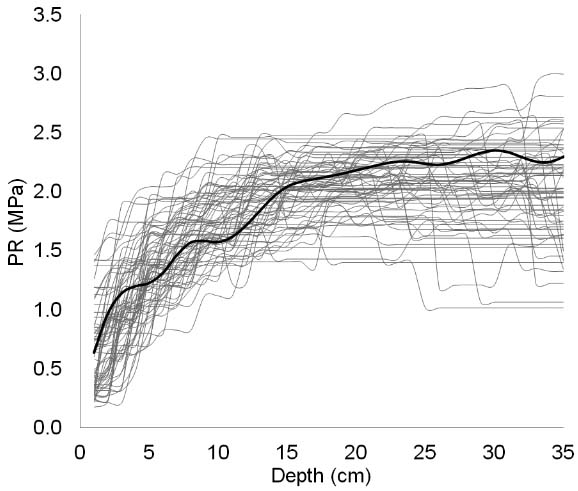ABSTRACT
Knowledge of agricultural soils is a relevant factor for the sustainable development of farming activities. Studies on agricultural soils usually begin with the analysis of data obtained from sampling a finite number of sites in a particular region of interest. The variables measured at each site can be scalar (chemical properties) or functional (infiltration water or penetration resistance). The use of functional geostatistics (FG) allows to perform spatial curve interpolation to generate prediction curves (instead of single variables) at sites that lack information. This study analyzed soil penetration resistance (PR) data measured between 0 and 35 cm depth at 75 sites within a 37 ha plot dedicated to livestock. The data from each site were converted to curves using non-parametric smoothing techniques. In this study, a B-splines basis of 18 functions was used to estimate PR curves for each of the 75 sites. The applicability of FG as a spatial prediction tool for PR curves was then evaluated using cross-validation, and the results were compared with classical spatial prediction methods (univariate geostatistics) that are generally used for studying this type of information. We concluded that FG is a reliable tool for analyzing PR because a high correlation was obtained between the observed and predicted curves (R2 = 94 %). In addition, the results from descriptive analyses calculated from field data and FG models were similar for the observed and predicted values.
functional Kriging; compaction; spatial variability; functional data










